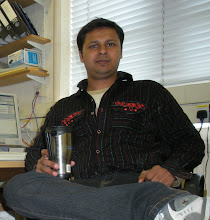Saturday, May 3, 2008
Nanosensors For Astronauts:
The National Aeronautics and Space Administration (NASA) is investing $2 million to develop this "Star Trek" technology at the University of Michigan Medical School's Center for Biologic Nanotechnology.
http://www.youtube.com/watch?v=Spr5PWiuRaY
Friday, April 25, 2008
Fusion activity at India
 ADITYA Tokamak : (image curtocy www.ipr.res.in )
ADITYA Tokamak : (image curtocy www.ipr.res.in )
ADITYA is regularly being operated with the transformer-converter power system. ~100 msec 80 - 100 kA plasma discharges at toroidal field of 8.0 kG are being regularly studied. During this period experiments on edge plasma fluctuations, turbulence and other related works have been conducted. Standard diagnostics have been employed during these measurements.
Steady State Superconducting Tokamak :
A steady state superconducting tokamak SST-1 is under design and fabrication at the Institute for Plasma Research. The objectives of SST-1 include studying the physics of the plasma processes in tokamak under steady state conditions and learning technologies related to the steady state operation of the tokamak. These studies are expected to contribute to the tokamak physics database for very long pulse operations. The SST-1 tokamak is a large aspect ratio tokamak, configured to run double null diverted plasmas with significant elongation (k) and triangularity (d). The specific objective of the SST-1 project is to produce 1000 s elongated double null divertor plasma

Fusion is the energy source of the sun and the stars. On earth, fusion research is aimed at demonstrating that this energy source can be used to produce electricity in a safe and environmentally benign way, with abundant fuel resources, to meet the needs of a growing world population.
IMAGE CURTOCY : www.iter.org

